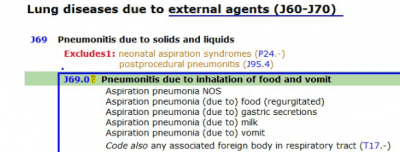Surviving Sepsis Campaign Embraces Sepsis-3 Definition
The 2017 Surviving Sepsis Campaign (SSC) guidelines to be published in the March 2017 issue of Critical Care Medicine* have adopted the 2016 Sepsis-3 definition of sepsis as “life-threatening organ dysfunction caused by a dysregulated host response to infection” discarding the Sepsis-2 definition of sepsis as SIRS due to infection. It now makes no distinction between sepsis and severe sepsis. The SSC guidelines are the recognized clinical authority for the diagnosis and management of sepsis, severe sepsis and septic shock since 2002.
Sepsis-3 defines organ dysfunction as an increase in the total SOFA score by 2 points or more from baseline. SOFA classifies 6 organ systems on a scale from 0 to 4 points using objective measures:
| 1 | Respiratory | pO2/FIO2 ratio |
| 2 | Coagulation | Platelet count |
| 3 | Liver | Bilirubin |
| 4 | Cardiovascular | Mean arterial pressure or vasopressors |
| 5 | CNS | Glasgow Coma Scale |
| 6 | Renal | Creatinine or urine output |
Unfortunately, the CMS Hospital Inpatient Quality Reporting (IQR) severe sepsis management measure (called SEP-1), which is abstracted by the hospital’s Quality Department, defines severe sepsis as SIRS due to infection with acute organ dysfunction. SIRS is defined as 2 or more of 4 criteria: temperature, leukocytosis, tachycardia, and tachypnea. The SEP-1 measure definition of organ dysfunction definition is much different than SOFA.
If providers do not follow the SEP-1 treatment requirements when the SEP-1 organ dysfunction criteria are met, a deficiency in the quality of care for severe sepsis management will be reported. Following only the Sepsis-3 definition may allow many cases to “fall through the cracks” for SEP-1 reporting.
It remains to be seen how CMS will now react to the new SSC guidelines including the adoption of the Sepsis-3 definition which conflicts with the IQR SEP-1 standards. In the meantime, hospitals should make sure medical staff leadership is engaged with this complex challenge of reconciling authoritative clinical guidelines with the CMS quality reporting imperative.
What Should We Do?
- CDI and coding professionals should begin using the Sepsis-3 definitions and SOFA criteria on March 1 for queries and clinical validation. Providers can expect auditors to use the Sepsis-3 definitions and criteria for the clinical validation of sepsis; successful appeal will now be unlikely unless SOFA criteria are met.
- The Sepsis-3 definition requires acute organ dysfunction as part of the definition of sepsis. Therefore, all cases which meet the Sepsis-3 definition would apparently be coded as severe sepsis.
- Hospital quality departments must move quickly with medical staff and leadership to educate and develop a strategy for diagnosis and management that will comply with the CMS IQR.
References: Surviving Sepsis Campaign: International Guidelines for Management of Sepsis and Septic Shock: 2016.


